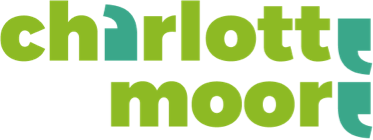One of the first things I learnt as an investment analyst was never to become too bewitched by a company’s profitability – always take a close look at the cash-flow. Many an investor had been caught out by the profit and loss account painting a picture of financial health, while the cash-flow statement showed a far more perilous situation.
As an investment analyst I understood this lesson intellectually. But when I became a freelance writer the fragility of cash flow became a viscerally understood truth. You can write articles and issue invoices but unless you get paid, you don’t have a viable business.
The crisis sparked by the Covid-19 pandemic will teach us all the importance of cash-flow. When unexpected and profound shock to the economy occurs, both companies and individuals realise cash is the life blood of a business.
When sales plummet overnight – as they have for airlines, restaurants and hotels – business suddenly face negative operational and financial gearing. That means suddenly operating profits plunge and it becomes difficult to maintain debt repayments.
To illustrate this point with numbers, I’ve mocked up some example profit and loss accounts. First we examine what happens to Company A if it loses 20% of its revenues. You can see that if it doesn’t manage to cut costs, its operating margin – the ratio of its operating profits to sales – will almost halve. That’s negative operational gearing.
| Type | Company A | Company A |
| Sales | 1000 | 800 |
| Cost of goods sold | 300 | 300 |
| Gross margin | 700 | 500 |
| Marketing | 150 | 150 |
| Rent | 200 | 200 |
| Operating profit | 350 | 150 |
| Net interest | 50 | 50 |
| Net profit | 300 | 100 |
| Operating margin | 35.00% | 18.80% |
Now let’s take a look at Company B which is exactly the same as Company A but holds more debt. What happens when it also loses 20% of its revenue?
| Type | Company B | Company B |
| Sales | 1000 | 800 |
| Cost of goods sold | 300 | 300 |
| Gross margin | 700 | 500 |
| Marketing | 150 | 150 |
| Rent | 200 | 200 |
| Operating profit | 350 | 150 |
| Net interest | 100 | 100 |
| Net profit | 250 | 50 |
| Operating margin | 35.00% | 18.80% |
| Net margin | 25.00% | 6.30% |
Just like Company A, its operating margin has almost halved. But the impact of its higher interest payments means the impact on net profit is even more extreme – its net margin, which is the ratio of net profit to sales, has now fallen by three-quarters. In other words, the higher the debt a company carries, the greater the impact of a sudden downturn in revenues. This is known as negative financial gearing. (You’ll need to increase the row count to 25 from 10 to see the net margin numbers.)
You’ll notice that even though both these companies have seen their revenues and profits slump, they are still making a profit, so they should survive.
That may be the case but it might also be that their cash flow has taken such a severe hit they could go bust. If, for example, all their expenses need to be paid at when they haven’t received money owed to them because they agreed to 90-day payment terms, then this kind of cash crunch can create real problems. As I said at the beginning, profit and loss accounts only paints half the picture.
These examples show how desperate companies are for cash in this predicament. They need it right now. They need to pay their rent and staff. And they need it to maintain their debt repayments. That is why there are stories of companies are tapping their credit lines.
And it’s not only companies will have an urgent need for cash. So too do individuals who find themselves out of work. Operational and financial gearing happens to people as well as organisations.
That is why we are seeing increasing calls for governments to step up and provide cash to keep business and individuals afloat during the pandemic. Monetary policy won’t be able to help. The need for cash is too immediate and credit worthiness has sharply declined for many businesses and individuals.



Comments are closed.